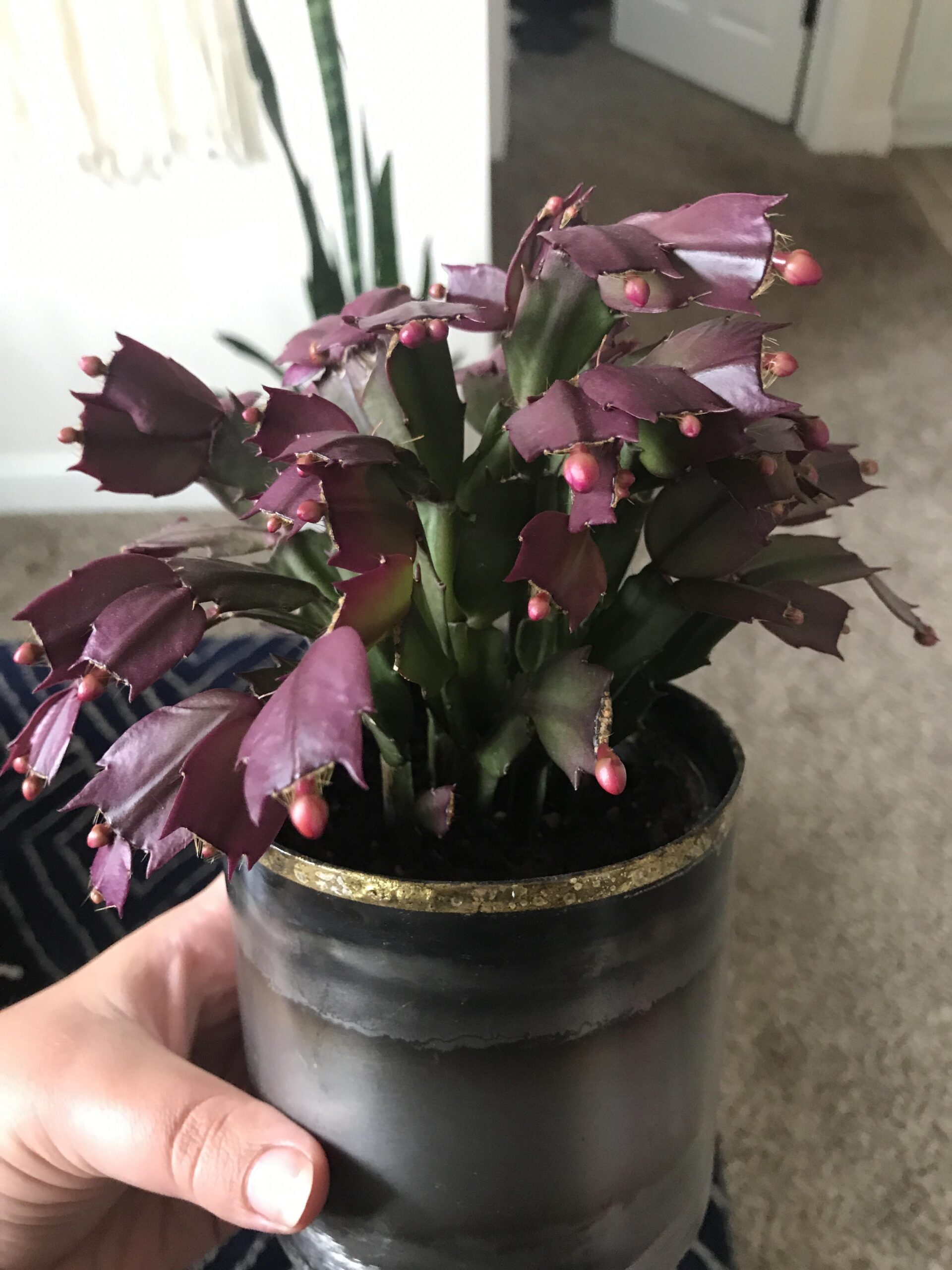As the festive season approaches, the Christmas Cactus (Schlumbergera) emerges as a vibrant ambassador of holiday cheer. Known for its exquisite blooms that often grace homes during Christmas, this succulent is not only a delightful addition to décor but also a marvel of nature. However, when its leaves inexplicably turn a deep shade of purple, it can be a source of concern for caretakers. Understanding the reasons behind this color transformation is essential for maintaining the health and aesthetic appeal of your Christmas Cactus.
The color of plant leaves serves as a silent communicator of their well-being. Just as a painter mixes colors to convey emotions, plants utilize hues to indicate their health status. Purple leaves are not merely a visual anomaly; they often signal underlying issues that require attention. By delving into the causes behind this phenomenon, one can restore the plant’s vibrancy and ensure it continues to thrive amidst the winter chill.
Understanding the Basics: What Does Leaf Color Signify?
Leaf color change in plants can be indicative of numerous factors, from nutrient deficiencies to environmental stressors. The Christmas Cactus features leaves that may change hue due to various physiological responses, particularly from an imbalance in nutrients or exposure to unfavorable conditions.
Firstly, it is essential to recognize that chlorophyll, the green pigment vital for photosynthesis, plays a paramount role in leaf coloration. When chlorophyll levels diminish due to stress or nutrient deficiencies, other pigments, such as anthocyanins, can become more pronounced, leading to a purple tint. This transition is much like a sunset when vibrant oranges and purples take over as daylight dissipates, showcasing a plant’s struggle.
Stress Factors: The Culprits Behind the Color Change
Environmental stability is crucial for the health of any plant, and the Christmas Cactus is no different. Several stressors can trigger that striking purple hue:
Temperature Extremes: One of the most significant factors influencing leaf coloration is temperature irregularity. The Christmas Cactus thrives in a moderately warm environment. If exposed to temperatures below 50°F (10°C) or sudden cold drafts, the plant’s physiological processes can be disrupted. The resulting stress leads to changes in leaf coloration, marking the plant’s distress.
Light Imbalance: Bright, indirect sunlight is ideal for these succulents. Insufficient light can impede photosynthesis, diminishing chlorophyll production. Conversely, extreme direct sunlight can scorch the leaves, causing them to seek refuge in pigments that signal stress. Balancing light exposure is crucial—too much or too little can transform leaves into shades of purple.
Nutrient Deficiencies: Much like humans require a well-rounded diet, plants depend on specific nutrients to flourish. A deficiency in potassium, phosphorus, or magnesium can lead to discolored leaves. When these essential nutrients are lacking, the plant may resort to using available reserves, resulting in a striking yet worrisome purple sheen.
Pests and Diseases: Unseen Struggles
Sometimes, the causes of discoloration are insidious, lurking in the shadows. Pests such as mealybugs or spider mites can sap the vitality of your Christmas Cactus. Their feeding can cause leaves to become discolored as the plant diverts resources to combat the infestation. Additionally, fungal diseases can manifest themselves in leaf color changes, often coupled with wilting or browning. Vigilance is key: regularly inspect your plant for any signs of unwanted inhabitants.
Correcting the Course: Remedies for a Vibrant Revival
Now that the potential causes have been unraveled, it’s time to discuss the solutions. By addressing the underlying issues, you can restore the lush green appearance of your Christmas Cactus.
Adjusting Temperature: Ensure your cactus is placed in an environment with stable temperatures. Avoid cold drafts and position the plant away from heating vents or air conditioning units. A consistent temperature ranging from 60°F to 70°F (15°C to 21°C) is optimal for growth.
Light Conditions: Evaluate the lighting conditions in which your cactus resides. If the plant seems deprived of light, consider moving it to a brighter spot with indirect sunlight. If it has been overexposed to harsh rays, filter the light using sheer curtains or reposition it where it can bask in the gentler glow of the sun.
Nutrient Restoration: Fertilization can revive your cactus. A balanced fertilizer specifically formulated for cacti and succulents can correct deficiencies. During the growing season, typically in the spring and summer, a bi-monthly application supports vigor. However, always follow the recommended dosage to prevent over-fertilization.
Pest Management: To combat pests, consider using insecticidal soap or neem oil as a natural deterrent. Regular inspection and preventative measures can help maintain your plant’s health. For diseases, removing affected leaves and improving air circulation can aid in recovery.
Conclusion: Nurturing Nature’s Gifts
The Christmas Cactus, with its enchanting blooms and intriguing leaf transformations, serves as a reminder of nature’s delicate balance. Purple leaves, although striking, are often signals of underlying challenges. With attentive care, rectification of environmental conditions, and proper nutrient management, you can help your cactus flourish, ensuring that its presence adds joy and color to your home during the festive season and beyond. By providing the needed resources and love, one can witness the transformation from distress to vibrancy—a true celebration of nature’s tenacity. Embrace your role as the caretaker, and let your Christmas Cactus radiate with health and beauty.





Leave a Comment